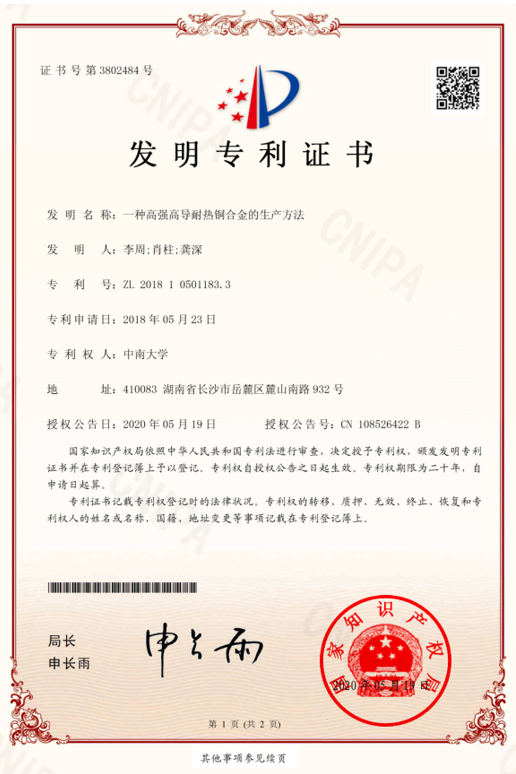本发明公开了一种高强高导耐热铜合金的生产方法,属于铜合金加工技术领域,本发明上引连铸过程采用的结晶器,其内衬为炭炭复合材料,以保证润滑、高导热和耐高温性能;上引连铸的温度为1180-1230 ºC,拉铸温度较低,能够有效避免拉铸时结晶器内熔液难以凝固和结晶器内衬磨损的问题;通过控制上引炉液面保护气体氮气的压力为0.2-0.7个大气压,避免拉铸时结晶器内固–液交界面分离,以生产较大重量和长度的铜铬合金产品;本发明高强高导耐热铜合金的生产方法使用廉价元素(Mg)代替稀贵金属,提高了铜铬合金的力学性能和抗软化性能,本发明生产方法是一种非真空、短流程制备工艺,成本低廉,适合大规模产业化制造,具有重要的经济和社会意义。
The invention discloses a production method of high–strength and high–conductivity heat–resistant copper alloy, which belongs to the technical field of copper alloy processing, in order to ensure lubrication, high thermal conductivity and high temperature resistance, the upper casting temperature is 1180–1230 ºC, and the casting temperature is low, which can effectively avoid the problems of solidification of melt and wear of mould lining during casting In order to avoid the separation of solid-liquid interface in the mould during casting, the pressure of protective gas nitrogen at the upper pilot furnace level is controlled to 0.2-0.7 atmosphere, so as to produce Cu-Cr alloy with larger weight and length The production method of the high–strength and high-conductivity heat-resistant copper alloy uses the cheap element (Mg) instead of the rare and precious metal to improve the mechanical properties and the softening resistance of the copper–chromium alloy, low cost, suitable for large–scale industrial manufacturing, has important economic and social significance.
